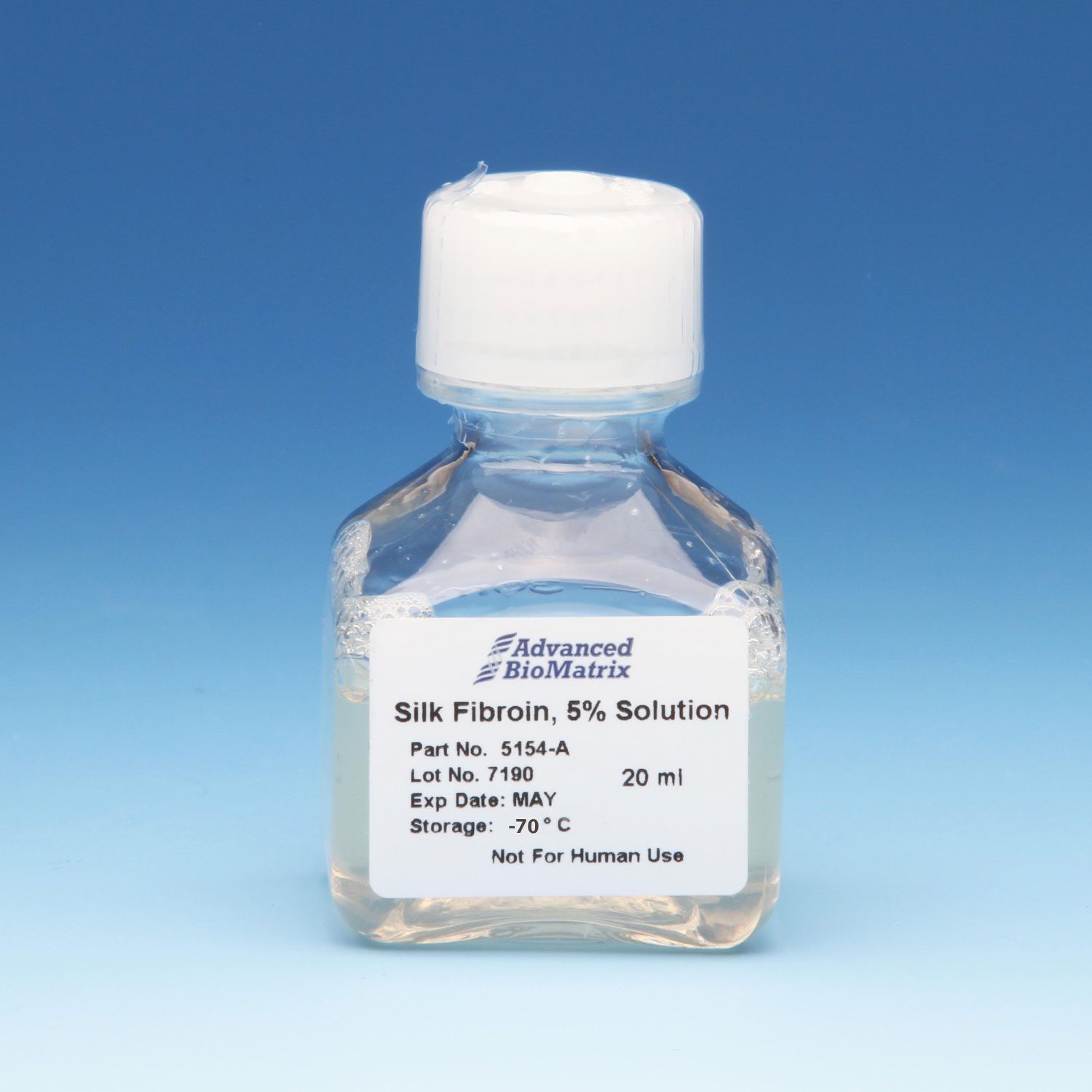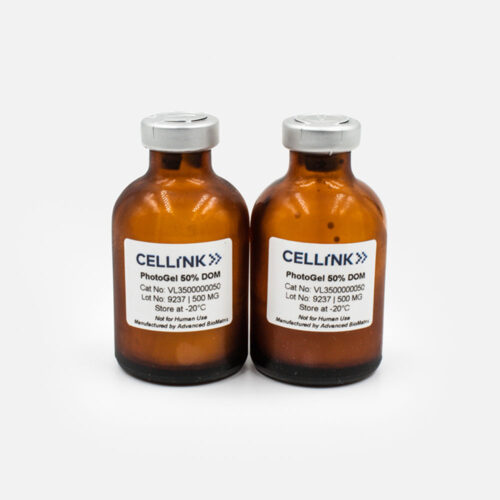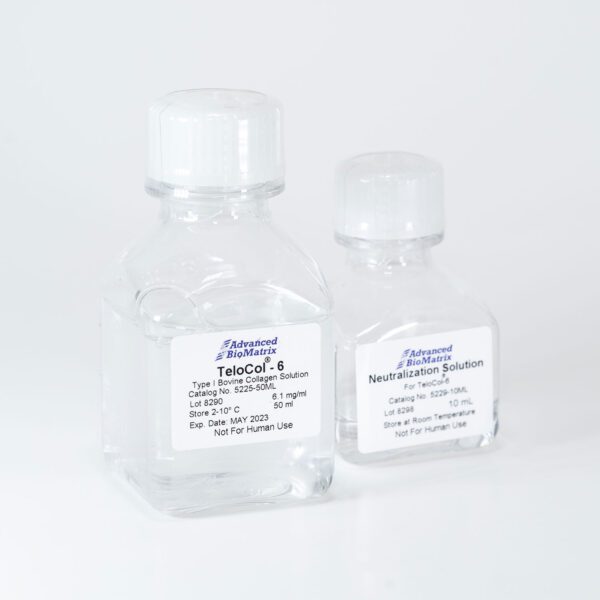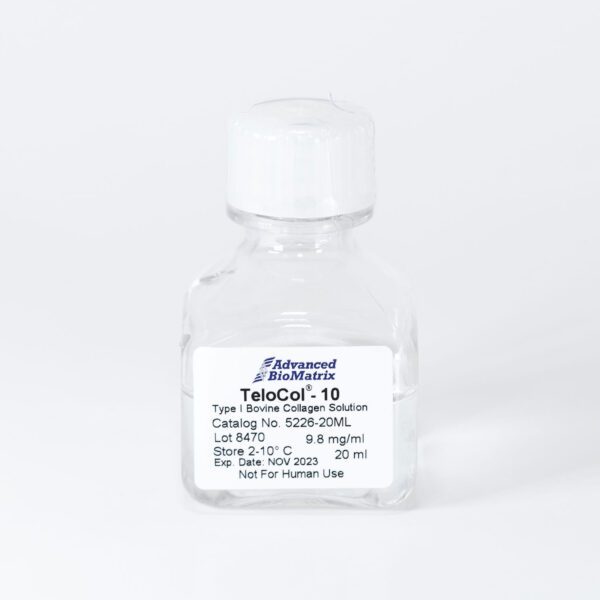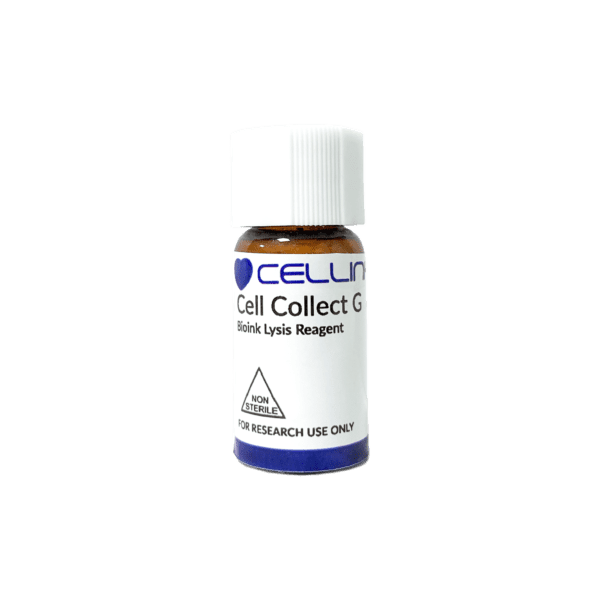Description
This fibroin silk solution is approximately 50 mg/mL (5% W/V) of solubilized protein. Its molecular weight is approximately 100k Da. It is available in 20 mL volume.
The silk solution is made of 100% fibroin protein that is derived from the domesticated Bombyx mori silkworm. The product is manufactured in a manner to minimize contamination and has a low bioburden but is not considered sterile.
Fibroin protein is the major structural component of the silkworm’s cocoon fiber. Fibroin offers great potential for use in medically related applications. This is due to the high degree of biocompatibility and lack of immune response when it is implanted within the body.
The silk fiber is broken down into a water-based fibroin solution. This solution can be employed as an ingredient in cell cultures. It can also be used to create 3D structures for researching tissue engineering.
As with traditional tissue-engineering approaches, the silk scaffolds are typically seeded in vitro with a specific cell type as most cells will adhere to fibroin protein, and then cultured over time to mimic tissue architecture. It has been shown that the silk fibroin protein can be degraded a number of naturally occurring proteolytic enzymes, and is thus a biologically active scaffold unlike other synthetic materials. As a result the silk scaffold material is degraded and remodeled through similar physiological pathways in the body. Silk fibroin protein is composed of both non-essential and essential amino acids, with a particular concentration of alanine and glycine present, and these amino acids are then reabsorbed by the surrounding cells for new tissue regeneration. This is important as silk degradation products do not collect in the local environment to induce a toxicity which is commonly associated with other synthetic and naturally occurring biomaterials.
The ability to produce a variety of forms and formats scaffold types (e.g. coatings, films, sponges, hydrogels, electro-spun fibers, micro/nanospheres, etc.) offers a number of advantages over other biopolymer systems like collagen, chitosan, and alginate that have less variety in processing choices. The silk material properties can then be modified through a variety of processing techniques to change degradation rate, hydrophobicity/hydrophilicity, transparency, mechanical strength, porosity, oxygen permeability, and thermal stability. In this regard, silk proteins represent a class of biopolymers with definable material properties for a given application.
Our silk fibroin solution is prepared from silk fibroin extracted from Bombyx mori silkworm cocoons and contains a high monomer content with a molecular weight of approximately 100k Da. It is supplied as a ~50 mg/mL (5%) aqueous solution. This product is aseptically processed resulting in a low bioburden but is not considered sterile. If culturing cells using this product, measures should be taken to maintain sterility of cultures such as use of antibiotics. This product is shipped separately on dry ice.
Specifications
| Parameter, Testing, and Method | Silk Fibroin #5154 |
| Form | Solution – Slight haziness |
| Package Size | 20 mL |
| Storage Temperature | -70°C |
| Shelf Life | Minimum of 6 months from date of receipt |
| Concentration | 40-60 mg/mL |
| Purity – SDS PAGE Electrophoresis | Characteristic |
| pH | >4.5 |
| Bioburden | Low (< 50 CFU’s) but not sterile |
| Cell Culture Conditions | Antibiotics are recommended |
| Endotoxin | < 5.0 EU/mL |
| Source | Domesticated Bombyx Mori Silkworm |
| Osmolality (mOsmo H20/kg) | <160 |
| Molecular Weight (kDa) | 100-150 |
Product disclaimer
This product is for R&D use only and is not intended for human or other uses. Please consult the Material Safety Data Sheet for information regarding hazards and safe handling practices.
